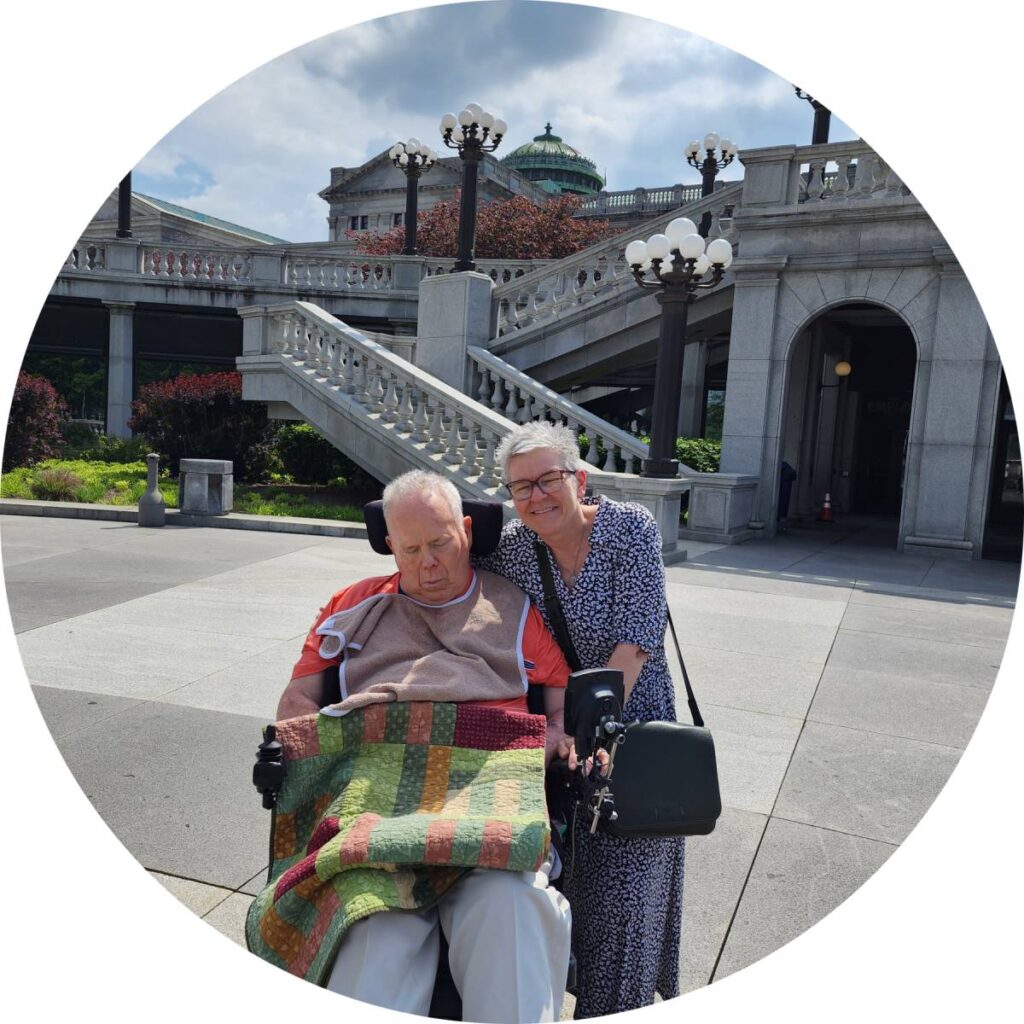There is no cure for ALS!
What is ALS?
ALS (amyotrophic lateral sclerosis), also known as Lou Gehrig’s disease or MND is a
neurodegenerative disease that attacks motor neurons, weakens voluntary muscles
throughout the body, and leads to paralysis. ALS can affect anyone. The average age is 40-70. An estimated 30,000 people in the U.S. have ALS.
ALS Facts
Over 5,000 people are diagnosed each year.
The average life expectancy is 2-5 years after initial symptoms, but 10% of people live more than 10 years, and 5% live more than 20 years.
Every 90 minutes, someone is diagnosed, and someone passes away.
CAUSE: 90% of the cases are unknown, and 10% are inherited through a mutated gene.
The estimated out-of-pocket cost of caring for a person with ALS is $250,000 per year.
There are only 3 drugs currently approved by the FDA to help slow the progression.
There is no CURE

Symptoms
- Early signs may include:
- Progressive weakness
- Difficulty walking
- Difficulty grasping objects
- Muscle twitching
- Slurred speech
- Difficulty swallowing
- Shortness of breath
Diagnosis
No one test can diagnose ALS.
It can take months or 1+ years.
Military
Veterans are 2x as likely to get ALS – There is no known reason. This includes the veterans who served in peacetime or war. There is not one branch or war that is affected by ALS more than another.
ALS Results in Paralysis
Patients diagnosed with ALS and their loved ones are often devastated by the diagnosis and the disease itself, which ends in paralysis and fatality. The lifespan of a patient with ALS is cut dramatically short, with patients expected to live just 2-4 years. The disease promises to take away the patient’s ability to care for oneself, creating an immediate need for accommodations to walk, bathe, and be fed.
There are Resources Available for Patients
Family members, which often include spouses and children, are overwhelmed with responsibilities and the burden that the disease has had on their lives. In short, it creates a financial and emotional burden on the entire family unit. Many of the diagnosed patients have served in our Armed Forces, and many are veterans. Those patients (and their caregivers) eligible for VA Benefits receive adequate financial support, and those not eligible for VA Benefits are left with a financial burden. All patients and their loved ones who are impacted by an ALS diagnosis have significant emotional needs that need to be met.